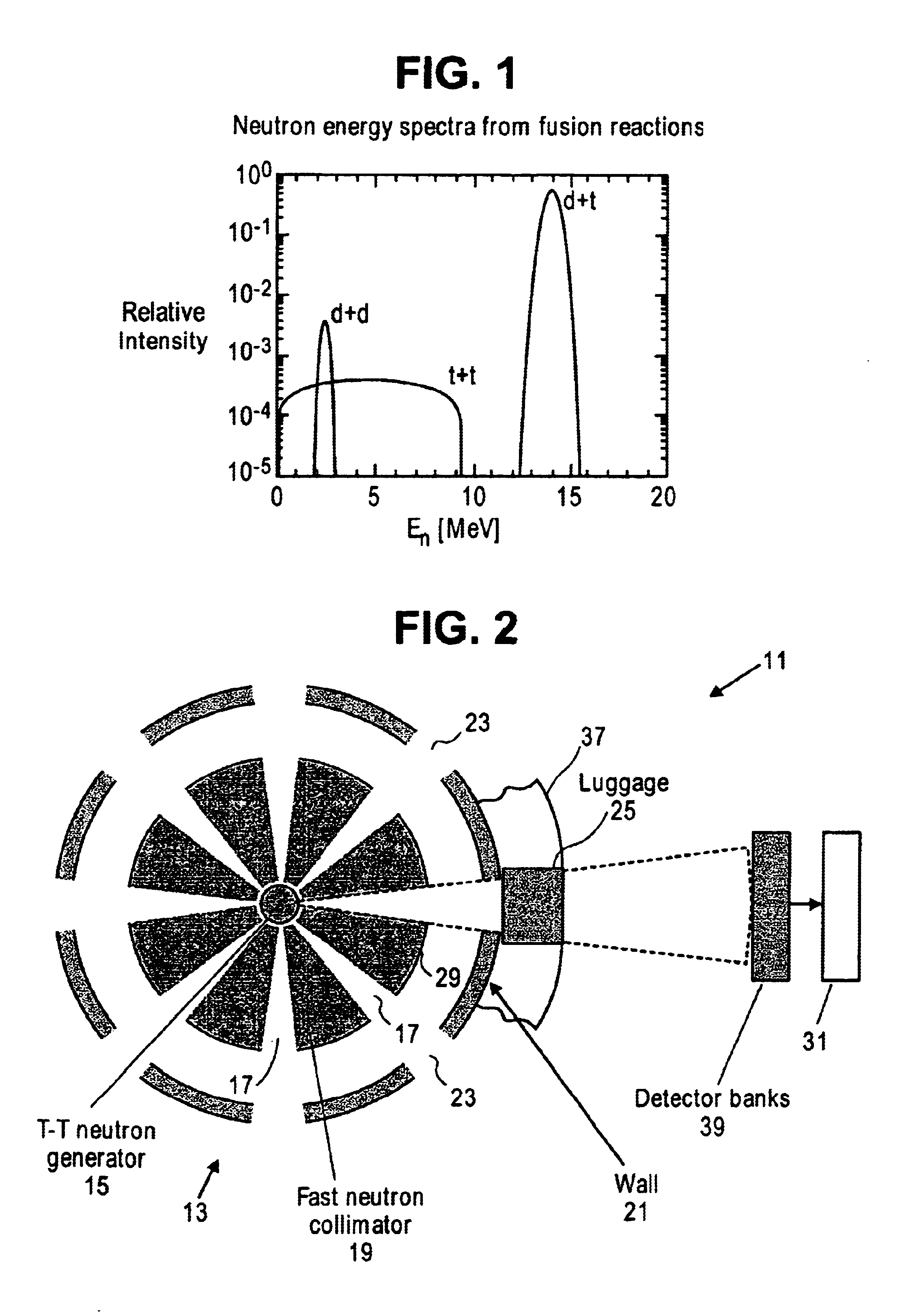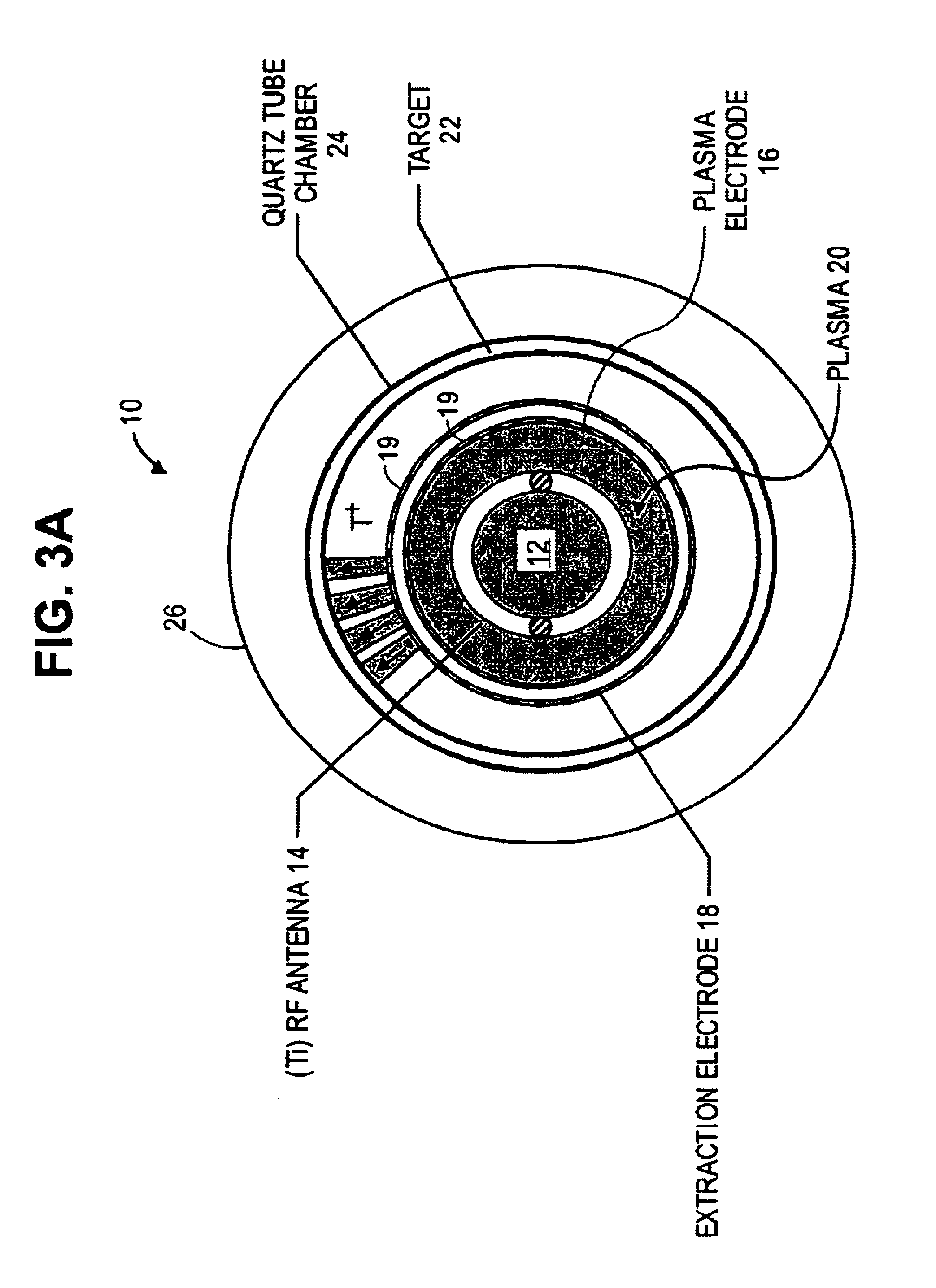Compact neutron generator
a generator and compact technology, applied in the field of compact generators, can solve the problems of limited neutron production, limited neutron yield, and limited ion source performance and beam size,
- Summary
- Abstract
- Description
- Claims
- Application Information
AI Technical Summary
Benefits of technology
Problems solved by technology
Method used
Image
Examples
Embodiment Construction
ass="d_n">[0025]FIGS. 4A, B are perspective views, partly in section, of the two alternate basic embodiments of the cylindrical neutron generator.
[0026]FIGS. 5A, B, C are further perspective views, partly in section, of the two alternate basic embodiments of the cylindrical neutron generator.
[0027]FIGS. 6A, B are a perspective view, partly in section, and a radial cross section of a nested coaxial neutron source.
[0028]FIGS. 6C, D are radial and axial cross sections of the nested neutron source showing the alternating targets and plasma generating regions with cooling system.
[0029]FIGS. 6E, F are radial and axial cross sections of the nested neutron source showing the alternating targets and plasma generating regions with the RF antennas.
[0030]FIG. 7 is a perspective view, partly in section, of a spherical neutron generator.
[0031]FIGS. 8A, B are side and top cross sectional views of a preferred neutron generator according to the invention.
DETAILED DESCRIPTION OF THE INVENTION
[0032]Th...
PUM
 Login to View More
Login to View More Abstract
Description
Claims
Application Information
 Login to View More
Login to View More - R&D
- Intellectual Property
- Life Sciences
- Materials
- Tech Scout
- Unparalleled Data Quality
- Higher Quality Content
- 60% Fewer Hallucinations
Browse by: Latest US Patents, China's latest patents, Technical Efficacy Thesaurus, Application Domain, Technology Topic, Popular Technical Reports.
© 2025 PatSnap. All rights reserved.Legal|Privacy policy|Modern Slavery Act Transparency Statement|Sitemap|About US| Contact US: help@patsnap.com



